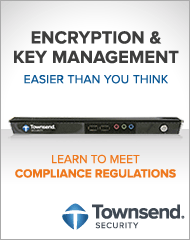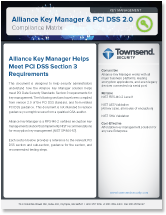Over the last few years we’ve seen attempts by the US Congress to pass new federal privacy notification laws. There are good reasons to do this as the current mix of state privacy notification laws are inconsistent and it is hard for organizations of any size to know if they are in compliance with the more than 45 state-level regulations. Businesses would appreciate some simplification and clarity, and one federal law would be preferable.
Both the House of Representatives and the Senate have seen proposed legislation pass out of committee. But no consolidated legislation has passed Congress and been signed into law.
The latest attempt is proposed Senate Bill 3333.
This legislation is similar to many state laws in how it defines Personally Identifiable Information (PII), how it proposes that breach notification take place, and how it levies fines for the loss of sensitive information. Like HIPAA legislation, it charters the Federal Trade Commission with enforcement responsibility.
Unfortunately, it won’t have much of an impact on reducing data breaches and identity theft.
First, the definition of Personal Information is too narrow in today’s consumer and Internet world. To qualify as a breach, the proposed act requires that the data loss include a first and last name combined with a social security number, or financial account information. The breach that happened to LinkedIn would not even qualify under this definition. And yet it was a serious security breach. The bad guys are really good at aggregating data like this, so the new law wouldn’t have helped. And it will give companies an excuse for hiding this type of loss.
When it comes to protecting sensitive data it leaves a gaping hole. Here is how the proposed legislation describes the approach to protecting sensitive data:
Personal information does not include information that is encrypted, redacted, or secured by any other method or technology that renders the data elements unusable.
Without a requirement to use encryption, AND clear guidance on protecting the keys used for encryption, we will continue to see significant data breaches taking place on a daily basis. Without this clear guidance, we will actually take a step backwards. In today’s world, security auditors and professionals already understand the need for good encryption key management systems and practices. They know that encryption keys stored with the sensitive data is equivalent to taping your house key to the front door when you leave in the morning. PCI data security auditors, SOX auditors, and almost all other security professionals now require that encryption keys be protected by HSMs designed for that purpose. But we don’t see mention of this in the legislation.
Rather than provide clarity around protecting sensitive data, this legislation will continue the confusion around how personal information should be protected, and even what constitutes a data breach. It will not provide the clarity and guidance that businesses hope for. It won’t stem the loss of sensitive information, and it won’t stop the terrible financial impacts of identity theft.
Let’s hope this bill gets strengthened before the final version is passed.
Patrick
For more information on the importance of encryption key management, download our white paper "Key Management in the Multi-Platform Envrionment" and learn how to overcome the challenges of deploying encryption key management in business applications.




 If you're struggling to understand encryption key management, trust me, you're not alone. If you are just beginning your research, here is the first step to lead you in the direction of a comprehensive key management plan that meets all data security compliance regulations.
If you're struggling to understand encryption key management, trust me, you're not alone. If you are just beginning your research, here is the first step to lead you in the direction of a comprehensive key management plan that meets all data security compliance regulations.
 In Microsoft's SQL Server Enterprise edition 2008/2012 you have access to Extensible Key Management (EKM). When EKM is enabled, SQL Server users can use
In Microsoft's SQL Server Enterprise edition 2008/2012 you have access to Extensible Key Management (EKM). When EKM is enabled, SQL Server users can use  AKM fully supports the path to column level encryption within the Oracle 10g and 11g environments. Again your approach will include making coding changes to your application layer to perform key retrieval from AKM. To help you with this on the Oracle front we provide some PL/SQL sample code for you to work from.
AKM fully supports the path to column level encryption within the Oracle 10g and 11g environments. Again your approach will include making coding changes to your application layer to perform key retrieval from AKM. To help you with this on the Oracle front we provide some PL/SQL sample code for you to work from.
 Townsend Security recently hosted a webinar titled “
Townsend Security recently hosted a webinar titled “
 So you've decided to purchase an encryption key management HSM to help you pass a QSA audit and meet PCI DSS compliance. Unfortunately just showing the auditor your paid receipt and key manager is not enough to satisfy requirements. You have to actually be using them in a production environment. Fortunately this is a fairly simple process to get started with Alliance Key Manager, our encryption key management HSM.
So you've decided to purchase an encryption key management HSM to help you pass a QSA audit and meet PCI DSS compliance. Unfortunately just showing the auditor your paid receipt and key manager is not enough to satisfy requirements. You have to actually be using them in a production environment. Fortunately this is a fairly simple process to get started with Alliance Key Manager, our encryption key management HSM. 


 In part one of
In part one of  Split Knowledge can also play a crucial role in protecting your data encryption keys. Parts of the security standard state that you shouldn’t export a key in the clear from the AKM database and that the key needs to be protected. For this to occur, you'd first have to have your Admin latch up to the key server utilizing a secure TLS connection with the proper credentials and authenticate to the server. Once the connection is established, the admin is free to export or import symmetric keys, however upon export they will be required to protect the symmetric key with a RSA key. No manual establishment of keys in the clear is supported. By default this is out of the box functionality; we ensure this requirement by setting a configuration option for PCI-DSS mode.
Split Knowledge can also play a crucial role in protecting your data encryption keys. Parts of the security standard state that you shouldn’t export a key in the clear from the AKM database and that the key needs to be protected. For this to occur, you'd first have to have your Admin latch up to the key server utilizing a secure TLS connection with the proper credentials and authenticate to the server. Once the connection is established, the admin is free to export or import symmetric keys, however upon export they will be required to protect the symmetric key with a RSA key. No manual establishment of keys in the clear is supported. By default this is out of the box functionality; we ensure this requirement by setting a configuration option for PCI-DSS mode.

